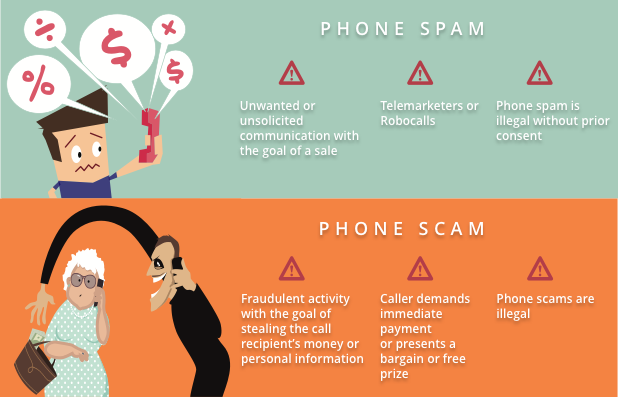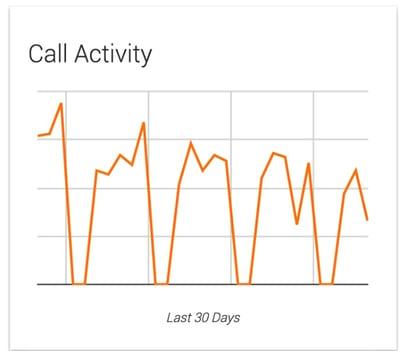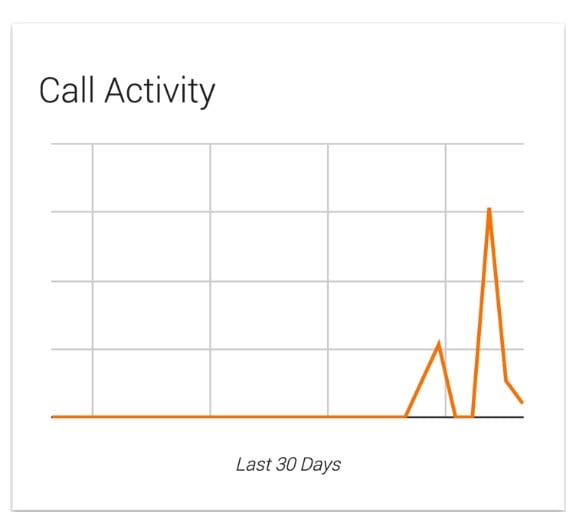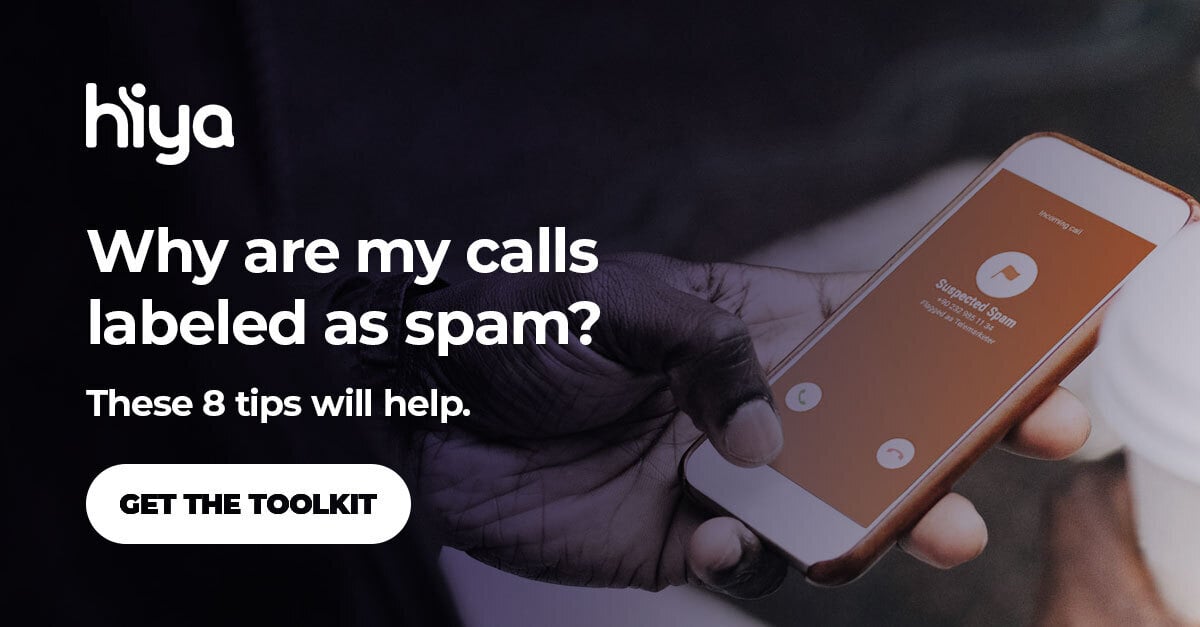
Spam and scam—two words that look and sound quite similar. To many people, scam and spam are synonymous with “trouble.” Here at Hiya, we make protecting you from unwanted calls our mission. To do so, we want to make sure you know a few things about spam and scam callers. For instance, what are spam numbers? What are the differences between spam and scam numbers? What do you do if you receive a spam risk call? How can you prevent these bad actors from contacting you or your customers?
We’ve found that there’s lots of confusion between spam and scam calls. So, we’re taking a moment to set the record straight.
What is spam?
Simply put, spam is a type of unwanted call that occurs when a person or company calls an extremely large number of people at once. Often, these calls are identified and labeled with a spam risk label.
Most people have suffered through the experience of being pummeled with dozens of annoying and unwanted spam calls that interrupt their day. And lest you think we're just talking about that persistent ex or your local gym asking if you want to cancel your monthly membership — we’re not.
Based on Hiya's 2020 data, it’s estimated that North America and Western Europe alone received around 157 billion spam calls in the last year. Consumers in those regions were hit by an average of 144 spam calls in the past year. 38% of all spam calls resulted in monetary loss, with an average of $182.00 per call!
So what constitutes a spam call (versus a normal unwanted call)? Matthew Matanovic, our Vice President of Product Design, explains what a spam number is.
“Spam calls are similar to email spam in the sense that they’re a form of unwanted communication. Spam calls and text messages are distributed in bulk and are, in most cases, unsolicited, which means they occur without any prior request. Examples may include telemarketers, who are typically live agents hoping to sell legitimate (albeit, unsolicited) services. Another variant of spam calls are robocalls, which deliver a pre-recorded voice statement with the same goal of making a sale. But, like email spam, robocalls are illegal without prior consent.”
In other words, a spam call can come from a telemarketer selling you a real product or service, or someone whose product or service is fake or doesn’t apply to you.
How is spam labeled?
If a number is flagged by your phone carrier as a spam risk call or robocall then that number will show up with a “spam” distinction when it tries to contact you. If you suspect a phone number is spam but it is not labeled as such, you can flag a phone number as spam directly with your telephone carrier or efficiently, with a mobile app like Hiya that helps block incoming spam calls.
Through monitoring the patterns of calls, carriers and voice performance platforms can also identify a spam number.
Voice performance platforms, such as Hiya, often utilize sophisticated, heuristic algorithms to assess call patterns in order to identify spam calls from other calls. Here is a pattern for a number used by telemarketers:

The pattern shows that the telemarketers in question consistently made a large number of calls over a long period of time. (Note: The daily volumes do not vary by much.)
Hiya uses algorithms to detect phone numbers with patterns that identify spam callers. The voice performance platform goes beyond just comparing a phone number to a third-party list of known spammers; Hiya’s advanced spam detection goes far beyond a static caller registry, which is why Hiya has the lowest error rate in the industry.
Advanced machine learning models analyze reputation along 22 different dimensions, to better secure and protect consumers and provide businesses full visibility into their numbers' reputation status.
What are scam numbers?
Scam numbers are a type of unwanted call that occurs when a person or company calls with negative intent. There are many types of scams, but the goal of these calls is typically to trick an individual into giving up sensitive information or sending money. Let’s take a deeper look at what scam numbers are.
In our highly digitalized world, people have learned to be cautious of scams where they could fall victim to giving away their money, identity, or personal information. People have taken to using passwords that practically resemble morse code, and would take a cryptographer to decode. They have backup emails, phone numbers, and apps that require two-factor authentication to gain access to. However, people often forget that scam numbers can be just as successful as scam emails or hackers. Here is how Matthew (our Vice President of Product Design! Remember him?) defines scam numbers:
“Scam calls are a form of fraudulent activity with the goal of stealing your money or your information. Similar to email scams, phone scams often present a bargain for merchandise, or something completely free (such as a free prize or winning a contest). Others demand payment for actions that victims have not done or services not ordered, including missing jury duty or payments on an outstanding debt like unpaid taxes or utility bills. Scams may arrive in the form of calls or text messages and should be immediately blocked and deleted.”
If a scam passes detection and the number comes through, how can you tell scam numbers from regular numbers? With spoiled milk you look at the expiration date, check to see if the smell has turned rotten and if you’re really brave take a little taste test. Scam numbers aren’t spoiled milk, but similarly, you can ask yourself questions or run certain tests in order to detect a rotten phone number.
A call is more likely to be a scam if the phone number looks odd and upon answering
-
The greeting is delayed or generic
-
The caller is unable to communicate
-
The caller says there’s a problem with an unknown bank or another account
-
The tone of the conversation becomes heated
-
You have to give personal or company information to identify yourself
-
The caller warns of extreme circumstances
-
You are being threatened
-
You need to act fast to take advantage of an offer
Scam calls are harder to identify because of how short their lifespan is. Additionally, scammers use algorithms to make their calls look like a local phone number when the call is really coming from across the country. With billions of scams and robocalls every year, enough people fall for the tactics of scammers to pay for these pesky calls to continue.
There are several types of scams that you should look out for:
- Banking scams
- Tax scams
- Lottery and sweepstakes scams
- Insurance fraud
- Neighbor scam
- Investment scams
- Charity scams
- Automotive scams
There are a few steps that businesses can take to improve their call reputation.
-
Avoid using only local phone numbers
-
Start displaying branded caller ID
-
Avoid shared lines for multiple businesses
-
Avoid mixed-use lines for the same business
-
Limit use of public phone numbers
-
Set up Do-Not-Originate lines
-
Limit the window of time for contact
-
Respect the do-not-call list
-
Monitor call center activity
Call patterns for scam numbers are completely different from patterns of spam numbers. Scam numbers are purposefully hard to detect and therefore more difficult to add to a spoofing list. Since these are criminals, they will tap into an existing number from a legitimate business for a short duration of time and quickly discard it in order to fly under the radar.
However, Hiya detects and blocks spoofed calls with an advanced data model. Below is the call pattern for a number used to propagate an IRS scam. The lifespan of the number is very short but the volume of calls is quite large—with scam calls, there are typically a few days of large amounts of calls, followed by a long period of no activity.

Criminals are getting smarter; they’re frequently switching numbers to avoid detection. Most anti-spam solutions that rely on user reports are ineffective against scam callers for this very reason. To prevent this, the Hiya voice performance platform uses advanced heuristics-based call pattern analysis and machine learning algorithms to help detect scam calls.
Blocking spammers, scammers, and robocalls
Whether it’s spam or a scam call, the best thing to do is to avoid engaging with these numbers. It can be tempting to pick up and give these callers a piece of your mind. But, if you happen to pick up a call that seems suspicious, hang up immediately. An unwanted call may at best be annoying and may, at worst, cost you or your customers their personal information, or hard-earned money.
Remember to never give personal or company information over the phone to someone who contacts you without warning. If a number claims to be from your bank, insurance agency, or the IRS, hang up immediately and call the agency yourself, at a publicly listed number, to make sure the call is legitimate. Especially use caution if pressured to give information immediately. Remember that the threats these callers use are illegitimate. Hang up and immediately report the number in the Hiya app, AT&T Call Protect, or Samsung SmartCall.
As a business, the increase of scam and spam calls every year can impact answer rates for your call center. Working with Hiya Connect will allow your business to display branded caller ID so that your customers know it’s you calling and not a scammer.
If you make more than 20,000 calls a month, we can assess whether or not your call center numbers have been marked as spam or received negative labels with a free Hiya Connect reputation analysis.




